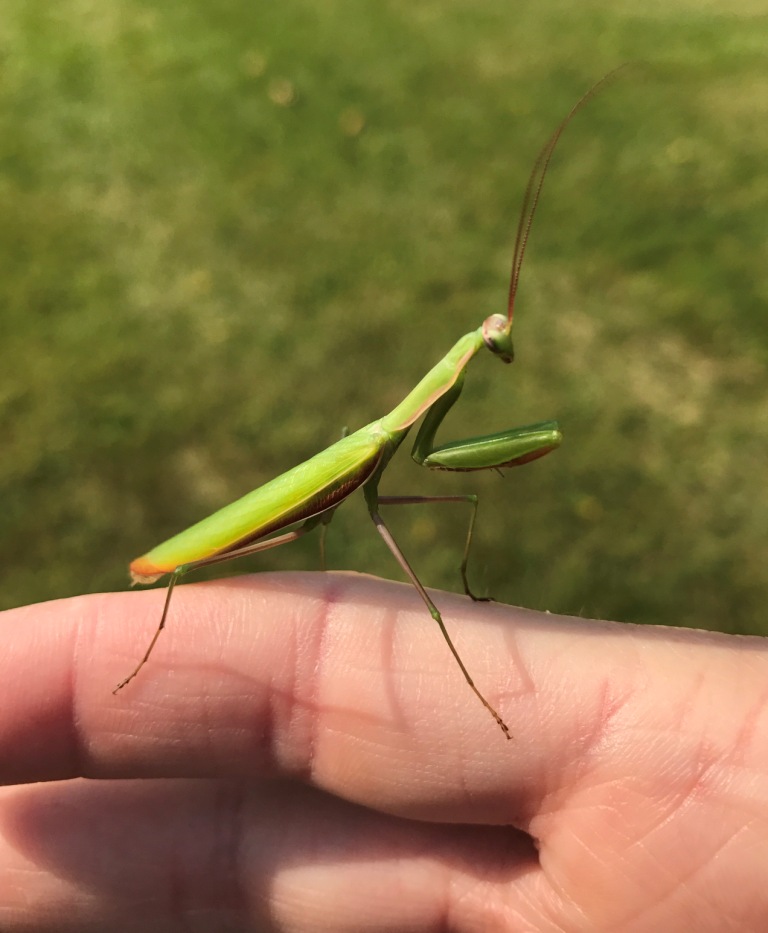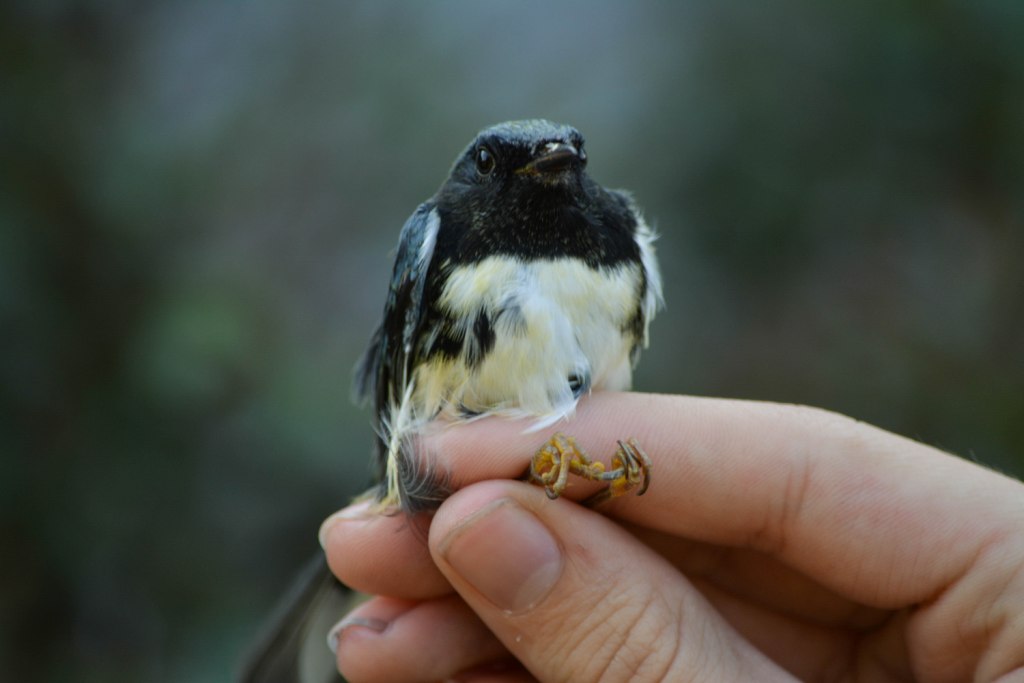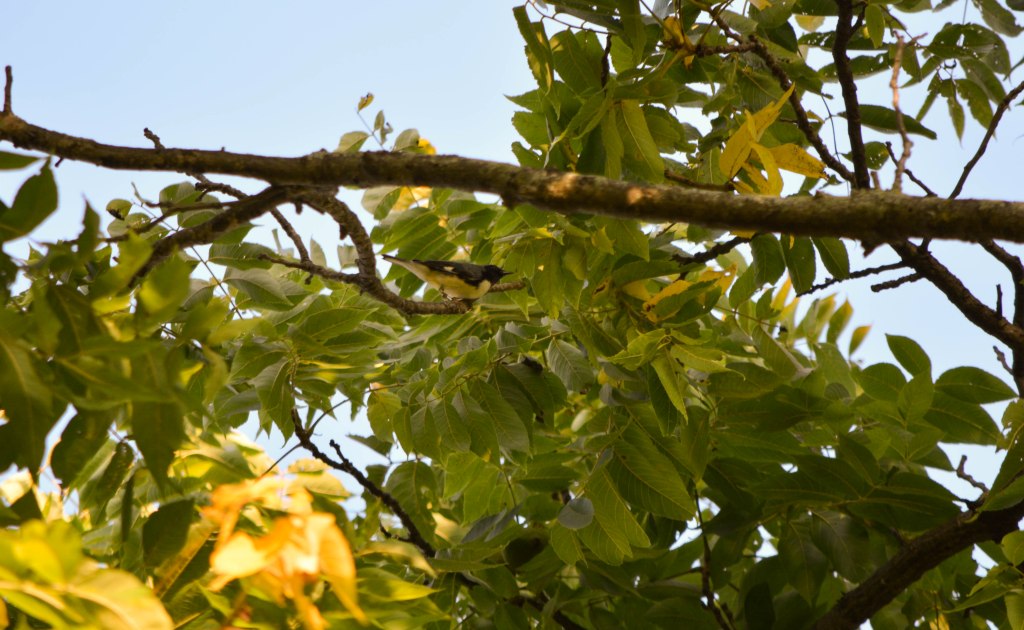
You could feel it this morning; hard to put one’s finger on exactly what “it” is but there was just more movement along the edges. And we were catching things, neat things: we handled 13 species of warblers. Our banding total of 34 birds was about twice what it was yesterday and the number of species encountered for the day’s count – 52 – was the highest so far this Fall.
One of the interesting things when you bird the same spot day after day is that you notice the changes that take place as birds come and go. Species ebb and flow. A couple of days ago there were lots of Eastern Wood Pewees around; today it was hard work to find just three. Same with American Robins. We had been getting good numbers of Cedar Waxwings but today we could find only one. But there was a definite influx of warblers today – hopefully a sign of things to come over the next 2-3 weeks.
Banded 34:
1 Downy Woodpecker
1 Yellow-bellied Flycatcher
1 Least Flycatcher
1 Traill’s Flycatcher
1 Black-capped Chickadee
1 House Wren
3 Veerys
1 American Robin
2 Gray Catbirds
4 Red-eyed Vireos

1 Brewster’s Warbler
1 Chestnut-sided Warbler
1 Magnolia Warbler

1 Black-throated Blue Warbler
2 Black-throated Green Warblers
1 Bay-breasted Warbler
1 Black & White Warbler
1 Ovenbird
1 Northern Waterthrush
2 Common Yellowthroats
1 Northern Cardinal
1 Rose-breasted Grosbeak
3 Song Sparrows
1 Baltimore Oriole
ET’s: 52 spp.
Photos:










Rick
